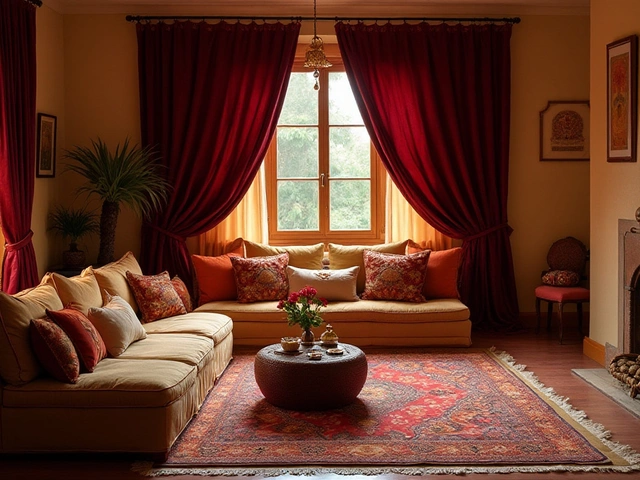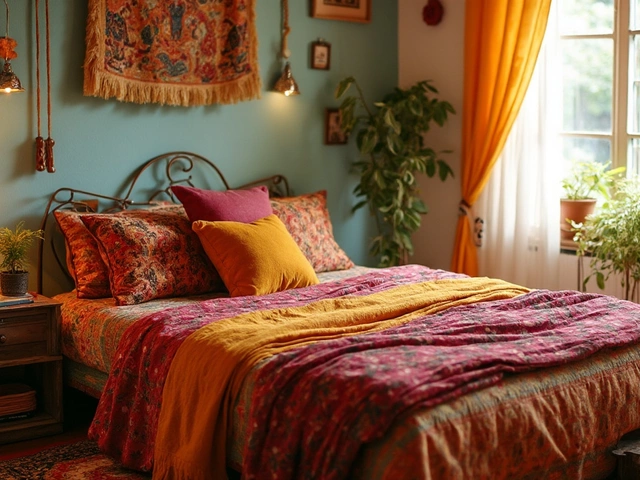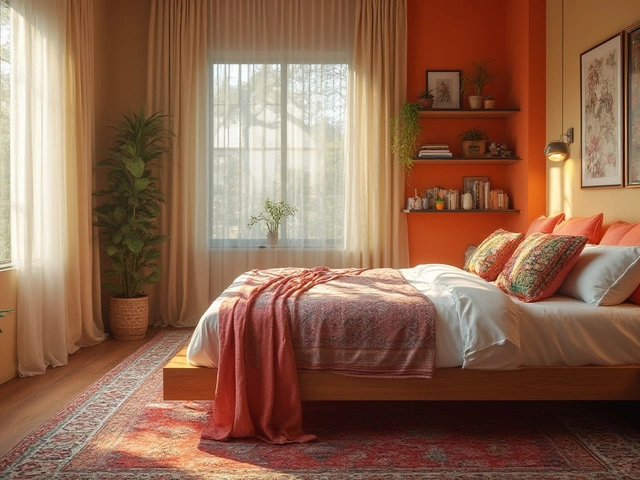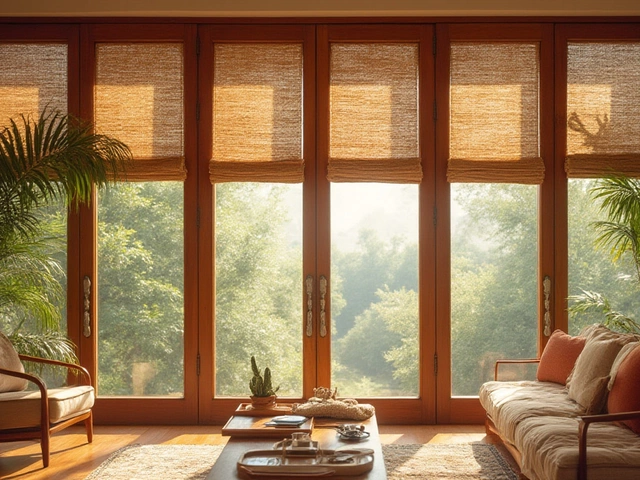So, how many chairs should your dining table have? It's a question most folks ponder when setting up or redecorating their dining space, and it's more crucial than you might think. The right number affects not just comfort but also how your dining area feels and functions. Sure, the first instinct might be to fill up every inch, but hold up!
First off, think about the space you're working with. It's not just about cramming in as many as you can. You need enough room for people to pull out their chairs and walk around without bumping into walls or furniture. Most experts suggest at least 24 inches between chairs and other furniture for easy movement.
Next, consider the table shape and size. Round tables generally allow for more intimate gatherings and can fit more chairs if you squeeze a bit, while rectangular or square ones might feel more formal and spacious. What's your vibe? Cosy or grand?
Understanding Your Space
Before deciding on the number of dining chairs around your table, taking a good look at your dining room is key. It's all about balance here. You want enough seating that accommodates everyone comfortably but still keeps the room feeling open and airy.
Start with measuring the basic dimensions of your dining area. This includes the length, width, and any furniture that’s already there. Why? Because each person should have about 24 inches of table space to ensure they can eat without elbowing their neighbor. Oh, and don’t forget about walkways—leave at least 36 inches between the table's edge and the walls or obstacles to ensure folks aren’t squeezing through.
Room Shape Matters
The room's shape influences the seating arrangement. If you've got a rectangular room, a long rectangular table complements it nicely. But if it's more of a square shape, a round or square table might fit better and allow for different dining chair setups too.
Also, consider what else the room will be used for. Are you planning on hosting large parties, or is it more of a cozy family zone? Your answers will guide whether you opt for more compact or spacious seating.
Traffic and Movement
Traffic flow is equally important. A cramped dining area isn’t fun, and it can be awkward for guests to navigate. Make sure there’s enough space for people to easily push back their dining chairs and move around.
- Measure thoroughly: Length, width, and any furniture that’s staying.
- Focus on personal space: Aim for 24 inches of table space per person.
- Plan for traffic: Leave 36 inches of space for easy movement.
In the end, it’s about creating a comfortable spot for family meals and entertaining, where everyone feels welcome. A bit of planning can transform your dining area into a space that’s both practical and inviting.
Table Shape and Size
Choosing the right dining table shape can significantly influence both the number of chairs it can hold and the overall atmosphere of your dining room. Let's break down how different shapes work.
Round Tables
Round tables are a great option for smaller spaces or those who love hosting cozy dinners. They encourage conversation since everyone can see each other easily, and they're quite flexible with seating. With a diameter of 4 feet, you can generally squeeze in around 4 to 6 people comfortably. But if you're in the mood for elbow room, stick with 4 chairs.
Square Tables
Square tables offer symmetry and balance to the room. At around 3 to 4 feet per side, they fit snugly into square dining spaces and are ideal for four people. If you opt for a larger square table, say 5 to 6 feet, you might up your seating to 8, but be cautious not to overdo it unless you have the space to back it.
Rectangular Tables
Rectangular tables are traditional crowd-pleasers that suit almost any occasion. They’re typically longer than they are wide, typically ranging from 6 to 10 feet. A 6-foot table can comfortably fit 6, while a 10-foot one can go up to 10 or 12 chairs, allowing you to really go big on guest invites.
Oval Tables
Oval tables bring uniqueness and can also be fantastic for narrower dining rooms where you’d like to keep a flow-y, open feel. They should be regarded similarly to rectangular tables regarding chair capacity, often offering about 6 to 8 seats comfortably.
When selecting a shape, a good rule of thumb is considering how you'll use it. Are you hosting formal meals or casual brunches? This determines whether a grand or more intimate setup is best. Also, think about the space left around it— it's key to making the room functional as well as stylish.

Options for Entertaining
When it comes to entertaining guests, the way you've set up your dining room can make all the difference. Whether it's a casual family gathering or a fancy dinner party, your seating arrangement needs to be adaptable while still feeling cozy and inviting.
Flexible Seating Arrangements
If you love having people over, consider having some extra dining chairs on hand. Stackable or foldable options are great because you can easily store them away when not in use. This way, you’re never caught short if more guests show up than expected.
Extendable Tables
Another clever option is to invest in an extendable dining table. These versatile tables usually come with added leaves that you can pop in when you need extra room. It smoothly transitions from a quiet family dinner setup to a bustling party table. Perfect for the social butterfly!
Room to Move
Don't forget to factor in how much space you need between chairs. Ideally, guests should be able to sit comfortably without feeling cramped. Experts recommend keeping at least 24 inches between chairs shoulder-to-shoulder, and more if you plan to have serving dishes on the table.
Mind Your Guests
Think about the nature of your gatherings. For more formal dinners, larger, cushioned chairs might be your style. Whereas for casual hangouts, simple wooden or upholstered chairs work fine.
Got a mixed bag of guest types? Mixing chair styles can actually create a unique, eclectic look that never feels out of place. Just be sure the styles mesh well together and the colors aren't clashing.
Practical Arrangement Tips
When it comes to setting up dining chairs around your table, there are a few practical tips worth considering. These not only help with space efficiency but also ensure everyone feels comfy. Let's dive in!
Spacing is Key
First off, getting the spacing right is crucial. For optimal comfort, leave about 24 to 30 inches between each chair. This provides adequate elbow room and makes things feel less cramped during meals. If using a rectangular table, 36 inches of space from the table edge to the nearest wall or furniture allows easy movement.
Purpose Drives the Setup
Consider what you'll be using the dining area for most often. Regular family dinners? Large gatherings? The frequency of entertaining guests might suggest having a few extra fold-up chairs stashed away for when more seating's needed.
The Flexibility Factor
It's smart to be flexible. You can have your everyday setup, and then bring in more chairs for special occasions. Opting for stackable chairs? That's a clever space-saving hack for smaller homes.
- Round Table: This can squeeze in an extra seat or two in a pinch.
- Rectangular Table: Ideal for formal settings, maintaining symmetry with an even number of chairs on each side.
- Extendable Tables: Brilliant for fluctuating needs, consider these for hosting bigger family events.
The Perfect Fit
Don't forget that the style of the chairs matters as much as the number. Avoid bulky designs if you're tight on space. Instead, sleek, compact chairs can still add flair without consuming too much room.
| Table Shape | Recommended Seating |
|---|---|
| Round (48-inch) | 4-6 Chairs |
| Rectangular (6-foot) | 6-8 Chairs |
| Square (4-foot) | 4 Chairs |
So, whether you're planning for daily meals or special occasions, the key takeaway is to balance comfort with flexibility. Keep these tips in mind and your dining setup will feel just perfect, no matter the occasion!





